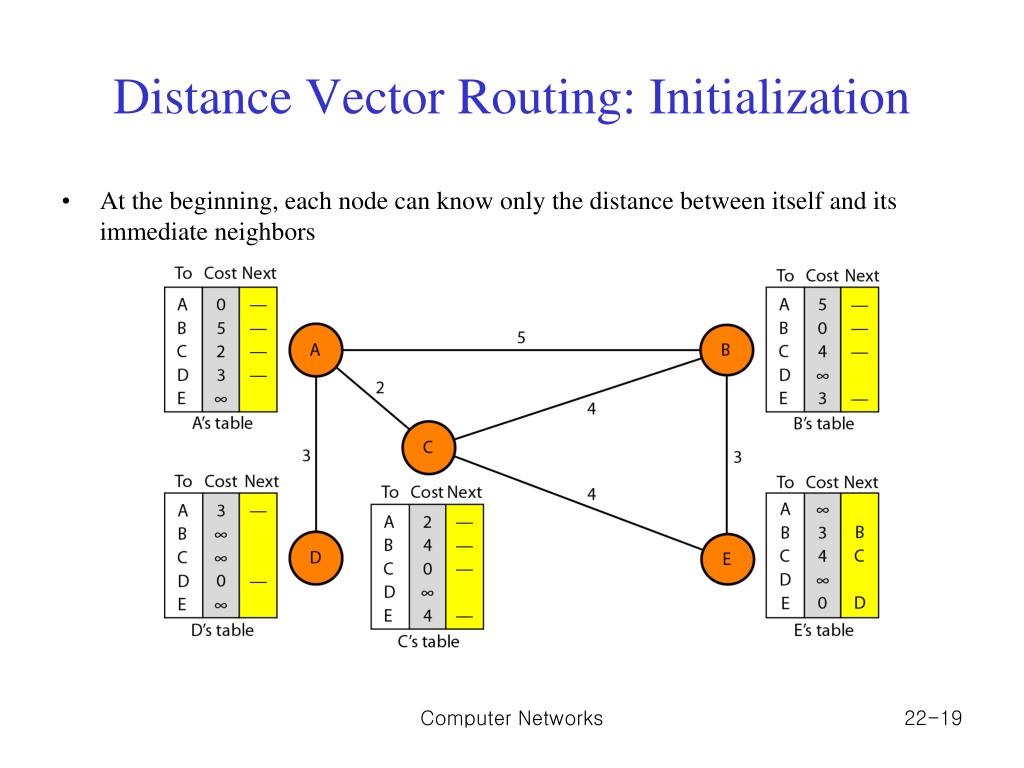Advantage Of Distance Vector Routing. Web distance vector routing (dvr) protocol. Web pros of distance vector routing:

The distance metric is usually measured in hops, but it could also be delay, packet loss, or something else. Web distance vector routing is a distributed iterative algorithm used by routers to determine optimal paths to destinations on computer networks. If the distance metric is hop, a hop is traversed each time a packet passes through a router.
Web Distance Vector Routing Protocol (Dvrp) Is A Routing Algorithm Employed By Routers To Determine The Most Efficient Path For Data Transmission Across A Network.
Distance vector and link state. Web one of the categorizations of routing protocols refers to which strategy to use for deciding which route is the best: Web one of the main advantages of the distance vector routing algorithm is its simplicity.
Each Router Receives And Saves The Most Recently Received Distance Vector From Each Of Its Neighbors.
It was developed by c. Web distance vector routing is an asynchronous algorithm in which node x sends the copy of its distance vector to all its neighbors. Distance to all other routers = infinity number.
Web Distance Vector Routing¶ Distance Vector Routing Is A Simple Distributed Routing Protocol.
In this network protocol, the distance refers to the distance (vector) between neighboring nodes, and the routing refers to the established route. The equation is given below: It is easy to implement and understand, making it a popular choice for small networks.
The Router Shares Its Knowledge About The Whole Network To Its Neighbors And Accordingly Updates The Table Based On Its Neighbors.
Each router in the network only needs to know the number of hops required to reach other routers, and it can use this information to determine the top path for data packets to travel. For example, if a router has three paths having 2, 3, and 4 hops ( routers) to a destination network, it will select the path that has two hops (routers). After exchanging the distance vectors, each router prepares a new routing table.
Consumes Less Memory And Processing Power.
Dvr has a slow convergence time, high processing time due to frequent recalculations, increased bandwidth requirements, and vulnerability to routing loops. What are the different types. However, it is not as efficient as other routing algorithms such as link state routing algorithm, and it is more prone to routing loops.